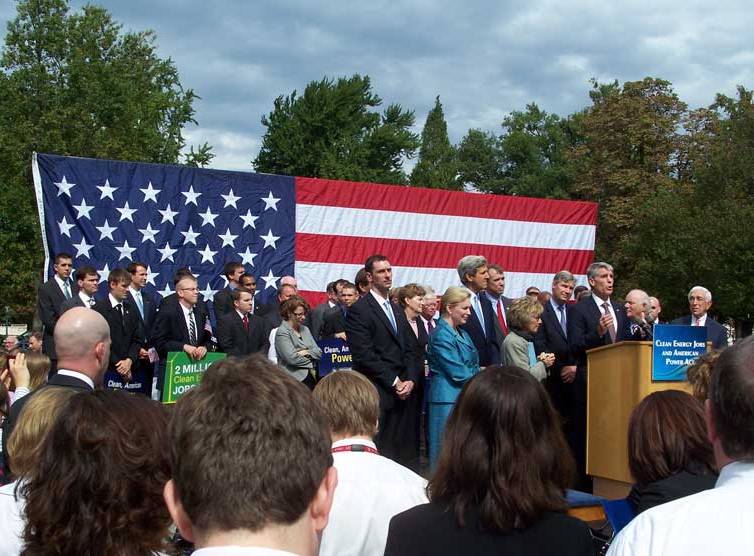Thomas Donahue, president and CEO of the Chamber, issued a statement today in response to heavy public criticism of the Chamber’s position on climate change.
His attempts to tap dance out of a public relations disaster, like the Chamber’s defense of the status quo, will do nothing to address the serious questions of American energy independence, climate change, and the development of a domestic clean energy industry.
Donahue says it is ‘dead wrong’ that the Chamber is opposed to efforts to reduce greenhouse gases. But just a month ago, his senior vice president, William Kovacs, publicly demanded that the Environmental Protection Agency hold a hearing to put the ‘science of climate change on trial.’ Kovacs also told the media the hearing would be ‘the Scopes monkey trial of the 21st century … It would be evolution versus creationism.’ There could not be a clearer repudiation of Donahue’s claims than that.
Donahue also blames environmentalists for his predicament when he says, ‘Some in the environmental movement claim that, because of our opposition to a specific bill or approach, we must be opposed to all efforts to reduce greenhouse gases, or that we deny the existence of any problem.’ But it’s not the environmental movement that’s opposing Donahue – it’s his own membership.
In the wake of Kovacs’ statement, the Chamber has lost three prominent members — Chicago-based Exelon, California’s Pacific Gas and Electric Company (PG&E) and the Public Service Company of New Mexico (PNM). Johnson & Johnson and Nike have also publicly criticized the Chamber’s stance on climate change. These companies have made it clear that the Chamber is not representing their best interests when it opposes legislation that will create both jobs and profits in the lucrative new clean energy economic sector.
In a public letter to Donahue, PG&E chairman and CEO Peter Darbee wrote, ‘Extreme rhetoric and obstructionist tactics seem to increasingly mark the Chamber’s public stance on this issue … an intellectually honest argument over the best policy response to the challenges of climate change is one thing; disingenuous attempts to diminish or distort the reality of these challenges are quite another. Unfortunately, it is difficult to read the Chamber’s latest maneuvers on this issue as anything but the latter … I fear it has forfeited an incredible chance to play a constructive leadership role on one of the most important issues our country may ever face.’
That should disprove Donahue’s statement that the Chamber’s views are shared by ‘the business community.’
Donahue also says the Chamber is leading the fight to clear the roadblocks that are delaying renewable energy development. But right now, the biggest roadblock to renewable energy development is the Chamber of Commerce itself, and its relentless attempts to undermine every good faith effort to create a new American energy policy.
If Donahue wants us to take his claims seriously, he should start by talking to his own membership about why so many businesses think a clean energy bill is a good idea. Then he needs to make sure the Chamber’s policies reflect the views of those businesses. Visionary American companies will undoubtedly be international leaders in the 21st century clean energy economy; the question is whether the Chamber will lead with them, or become a business relic like the phonograph or the pony express.
Steve Cochran is the director of EDF’s national climate campaign.











